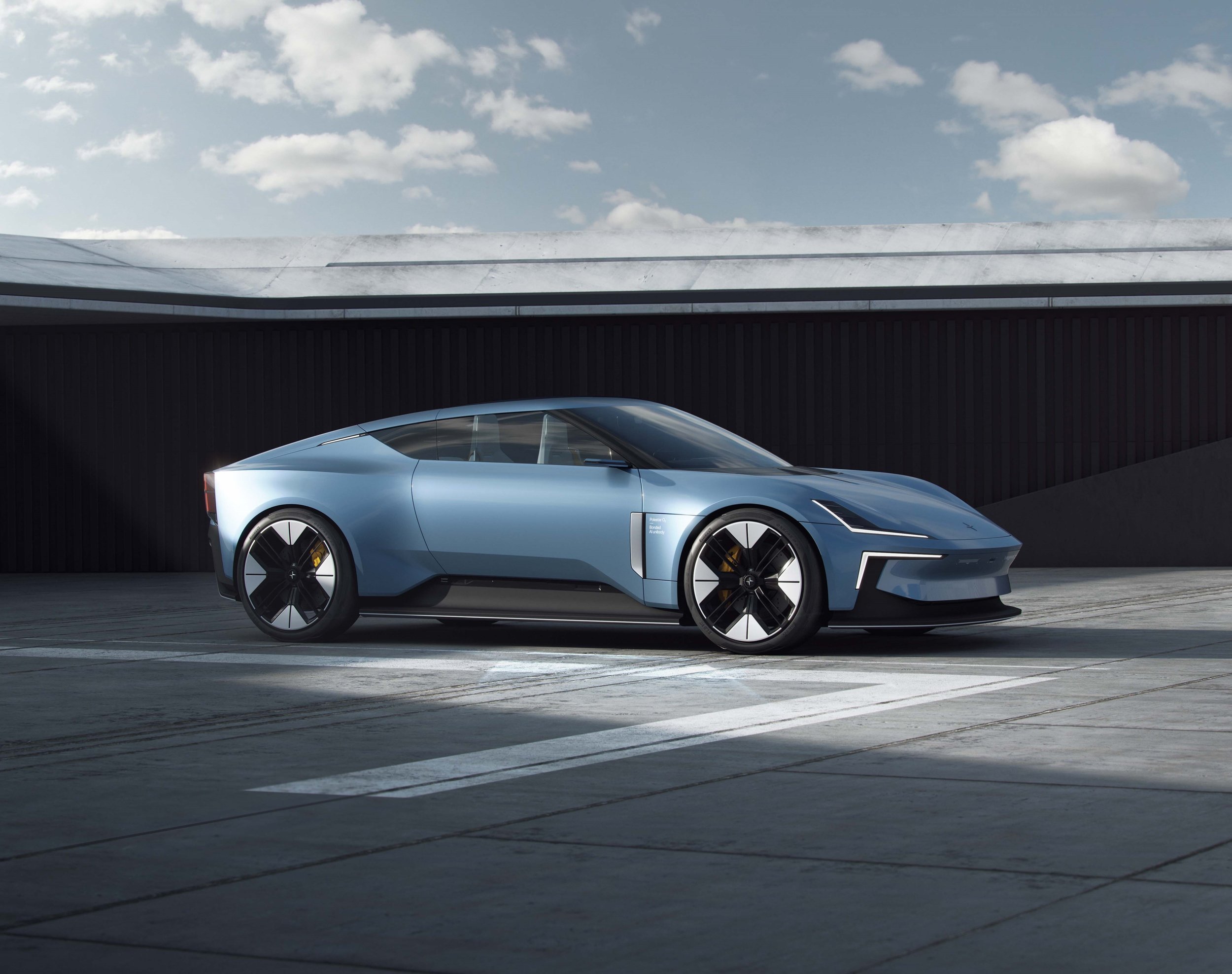Expectation Management
The Polestar O2 concept car meets all expectations - which is a problem
What’s to dislike? (all photos © Polestar)
In more ways than one, Polestar’s O2 concept car acts as antidote to much of what aesthetes find unedifying about current car design trends. It’s a sleek roadster, rather than an SUV. Instead of excessively neo-baroque, it is emphatically modernist in its appearance. Overall, the design craftsmanship on display once more makes large parts of Polestar’s competition appear unambitious at best, inept at worst.
If one was to nitpick, a point could be made that the O2’s heavy middle section isn’t as effectively disguised - courtesy of the black lower part of the body - as on the previous, longer Precept concept car. But other than that, in terms of basic concept and execution, the O2 would seem to be a direct answer to the prayers of those to whom a towering, ostentatious Electric Sports Utility Vehicle doesn’t seem like appropriate means of transportation towards the future motorist’s promised land.
Against this backdrop, it would seem hard, even harsh to argue against the Polestar O2. With its makers having gotten such much right and having obviously made an effort to meet the highest standards of design craftsmanship, why seek any microscopic fly in this most luxuriant ointment? Why try and find the chink in the armour of a knight fighting for the good cause?
The problem the Polestar O2 embodies in its marvellously coherent, perfectionist manner is the complete absence of surprise. It is, in most banal terms, a two-door, open-top take on the Precept. Which is at once aesthetically commendable and creatively lamentable.
On the one hand, it seems understandable that Polestar’s creatives decided to adhere to formula. After all, the Precept concept car was the first pure Polestar design, without any strands of Volvo in its DNA. However, the unusual strength of the Polestar brand, given its youthful age, means it feels more established than it has any right to be. Due to the Precept’s coherence and attention to detail, the O2 was presented with one fine challenge to try and exceed its impact - a challenge it hasn’t mastered.
There are two likely explanations for this phenomenon, each one with different repercussions on Polestar’s future. The first of these would centre on timidity as motivation: What with the Precept’s acclaim, Polestar’s creatives and decision makers might have been afraid of blurring the brand’s just-established sharp profile. Hence the application of a basically identical aesthetic onto a different format - which is a most Germanic principle, after all, and hence consciously or unconsciously ingrained in the reasoning of Polestar’s several Volkswagen AG-trained creatives.
The other, hopefully incorrect hypothesis regarding the O2’s rigid adherence to Polestar’s formula would suggest a particularly early case of hubris. Given Polestar’s exemplary craftsmanship, the creatives just might have been tempted into believing that their brand of perfection wouldn’t excuse any meddling. That there’s no space worthy of being explored left, right, above and below the Precept’s visuals.
For all its achievements so far, such complacency would be premature on Polestar’s part, to say the least. More importantly, it would be deeply counterproductive, given how sorely the industry needs those ambitious Sino-Swedes as a design benchmark.
Here’s to Polestar’s next effort displaying a trait other than perfectionism: Curiosity.














Car interior designer who created some of the most significant cabins of all time, most notably the Porsche 928’s